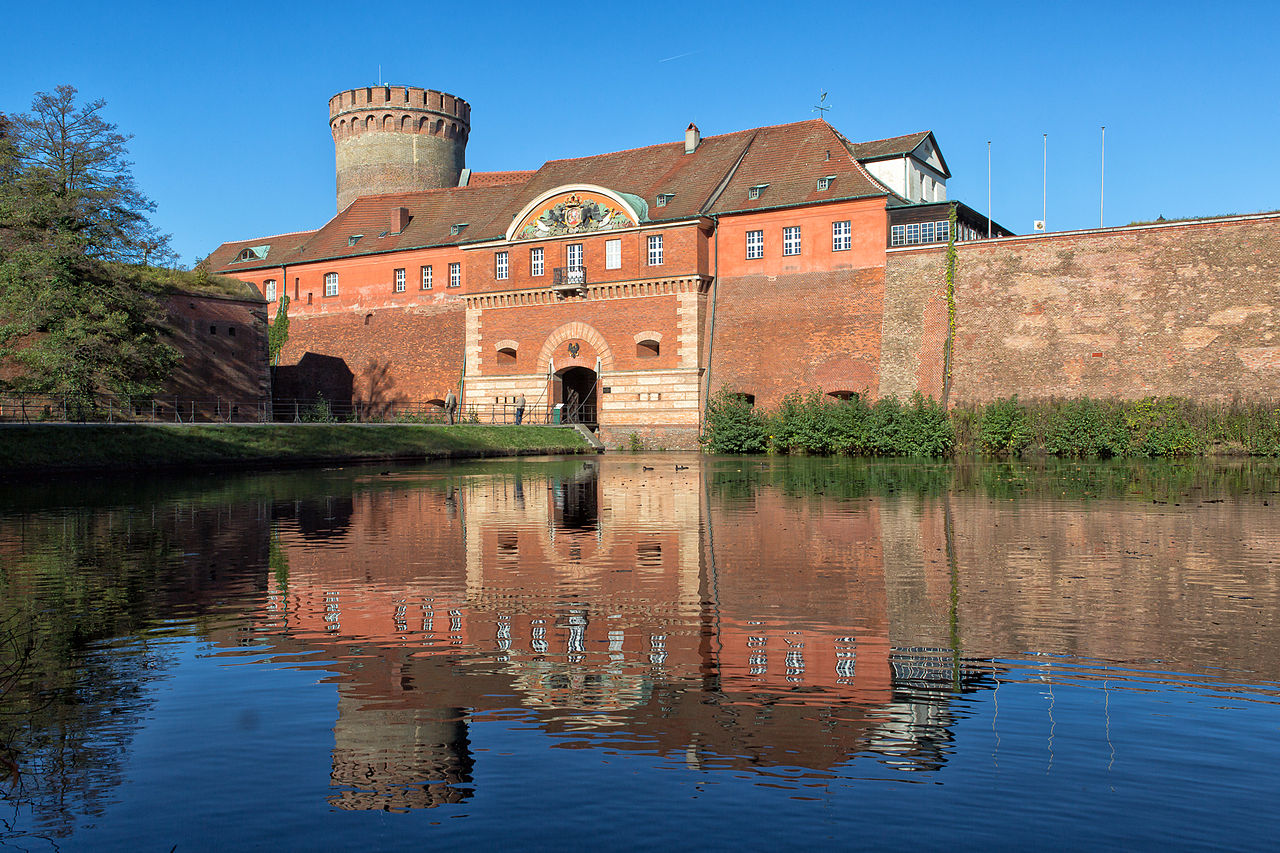
The remote western region of Berlin Spandau, which once was a separate town, has long been one of the most populated and most beloved townspeople districts of the German capital. Spandau is famous for its original old town and ancient citadel on the Spree.
When the creation of Greater Berlin was going on in the 1920s through the merger of small villages and towns, local residents sighed heavily because of the partial loss of their sovereignty. Until now, you can hear: "we are going to Berlin" when it comes to a trip from Spandau to the center of Berlin. Today's district of Spandau long ago was a settlement of one of the Slavic tribes (gevellov), built already in the 8th century. N. E.
In the late 12 century. Spandau was already a small town with its own fortress. The oldest surviving part of the fortress is the Julius Tower, built in the distant 1230. And by the 14th century. Here erected strong urban fortification walls. By the way, the fortress door, which has survived since that time, weighing up to eighteen tons, which served as a reliable protection against the penetration of strangers into the fortress, is now kept in the museum.
The Spandau Citadel is considered to be the main attraction of the district. This is a typical military fortress 18-19 centuries. With protective shafts, surrounded by a pond and internal buildings of the Nazi period. Now the building of the fortress, completely reconstructed after the model of the 17th-19th centuries, is a large tourist complex. This majestic brick structure, surrounded by a park, includes the preserved from the 13th century. Round tower of Julius.
In Spandau, you can see an exhibition telling about the history of the fortress and the military achievements of the Germans. Part of the museum is dedicated to the city of Spandau itself, the archeological values found in these lands are demonstrated - weapons, armor and, of course, a huge mock-up of the fortress itself, such as it was in the Middle Ages. Special expositions represent artillery weapons and blacksmithing; In addition, in the building you can find a gallery of German engraving and modern art.
From 1936 to 1945, gas labs were located in Spandau Citadel. More than 300 employees worked not only to develop means of protection against gas attack, but also to develop chemical warfare agents and nerve gases. It was one of the most important centers of chemical weapons in the Third Reich. Some rooms of laboratories remained intact until now, the entrance there is closed to the public.
You will be surprised, but in the territory of the fortress you can find a theater, in the building of which, apart from the theater itself, there are harmoniously arranged all kinds of art workshops where you can see the production of glassware or art forging, as well as a small exposition of folk instruments.
In addition, there are many souvenir shops and cafes on the territory of the citadel, so you can relax and have fun, and touch the depths of history at the same time.
Not far from the fortress was once prison Spandau. It was a military prison, built in 1876. At the end of the last century it was demolished, and a modern shopping center was erected on this site.
Hallo. Sehr schönes Bild! Grüße nach Spandau. :)
Downvoting a post can decrease pending rewards and make it less visible. Common reasons:
Submit
Historical Footnote
Spandau prison was the place where they imprisoned Rudolf Hess, a prominent Nazi politician. Hess flew to Scotland in 1941 to negotiate peace, but was arrested and imprisoned until his death at the age of 93 by suicide.
His story is a mystery that will probably never be known. Those too young to know of this World War II mystery can learn more in the Wikipedia article. In simple terms, the whole story does not add up. Why was he imprisoned for life? What did he do wrong? Work for peace? Why did the Russians block his release? Why did the doctors say he was to old and frail to orchestrate a suicide?
I have wondered throughout my life about the secrets that Rudolf Hess knew and why his life turned out like that. Obviously, something isn't kosher.
Downvoting a post can decrease pending rewards and make it less visible. Common reasons:
Submit
The Russians did not block the release. The guard duty for the Spandau prison was shared among the allied forces and they would switch the responsible guards every month or so. Mikhail Gorbachev announced to release Rudolf Hess for humanitarian reasons on the next transition. Shortly after that announcement Hess allegedly committed suicide. Most likely he knew too much about some very powerful people. We will never know what he knew, I guess.
The prison is not as close to the Spandau Citadel as mentioned above. It is about two miles away, which may be considered close, but those two complexes of buildings did not belong together.
I'm living close to the place. There are still some walnut trees which the prisoners planted. There is a lot of gossip about that place, and especially older citizens of Spandau (Wilhelmstadt) still know many stories about it.
Downvoting a post can decrease pending rewards and make it less visible. Common reasons:
Submit
Please give credit to the photographer, as stated in the license (CC BY-SA 3.0) under the following link: https://creativecommons.org/licenses/by-sa/3.0/
Downvoting a post can decrease pending rewards and make it less visible. Common reasons:
Submit